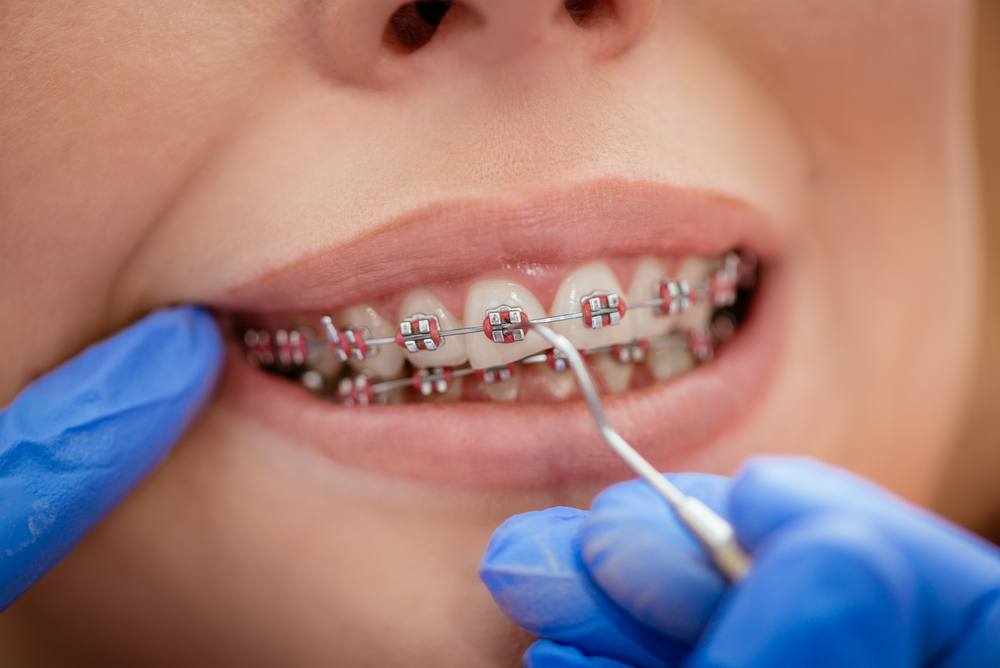Comprehensive Overview to Orthodontics Treatments for Correcting Dental Misalignments
Understanding the ins and outs of each treatment, including their devices, advantages, and potential drawbacks, is important in making informed decisions regarding one's orthodontic treatment. As we navigate through the extensive overview to orthodontic treatments for remedying oral misalignments, the elaborate details of each approach will unravel, shedding light on the course toward a harmonious and useful oral placement.
Orthodontic Procedures Introduction

Regular adjustments and tracking are critical components of orthodontic treatment to ensure progression is on track and to make any necessary modifications along the way. By going through orthodontic procedures, clients can not only accomplish a straighter smile however likewise enhance their general oral health and wellness and function.
Conventional Braces: Exactly How They Work
When considering orthodontic therapies for dental misalignments, typical braces stick out as a tried and true method for correcting teeth placing. Standard dental braces include brackets, cords, and bands that interact to apply constant pressure on the teeth, gradually relocating them into the wanted positioning. The brackets are affixed to the teeth utilizing a special adhesive, and the cords are threaded with the braces. By readjusting the stress of the wires, orthodontists can regulate the direction and pressure applied to each tooth, leading them right into appropriate alignment with time.
As stress is used to the teeth with the dental braces, the bone surrounding the teeth is reshaped to sustain the new tooth placements. Individuals will certainly need regular changes at the orthodontist's workplace to make sure the braces continue to use the proper pressure for reliable teeth movement.
Unseen Aligners: Disadvantages and pros
Unnoticeable aligners offer a discreet and hassle-free option to typical dental braces for correcting oral imbalances. These clear, customized trays are essentially invisible when worn, making them an appealing alternative for people seeking an extra cosmetically pleasing orthodontic treatment. Among the key benefits of unseen aligners is their removability, enabling less complicated maintenance of dental hygiene compared to traditional braces. Clients can eliminate the aligners before eating or brushing their teeth, reducing the danger of food getting stuck in the home appliance and streamlining the cleaning procedure.

Surgical Orthodontic Options
Surgical treatments in orthodontics existing sensible alternatives for resolving complicated oral misalignments that might not be efficiently solved with conventional orthodontic treatments. While traditional braces and invisible aligners can fix lots of orthodontic concerns, particular situations need medical treatment to attain optimum results. Surgical orthodontic options are usually advised for extreme malocclusions, substantial jaw inconsistencies, and situations where the underlying bone framework needs modification to achieve appropriate placement.
One usual surgical orthodontic treatment is orthognathic surgery, which entails repositioning the jaws to fix useful concerns such as trouble eating or speaking. This surgical treatment is commonly executed in collaboration with an orthodontist that aids straighten the teeth before and after the treatment. Surgical orthodontics might also entail treatments to subject impacted teeth, remove excess periodontal tissue, or improve the jawbone to create a more unified facial account.
Prior to thinking about surgical orthodontic alternatives, clients undertake a thorough assessment to establish the necessity and possible benefits of such treatments. cumming invisalign. While surgical treatment may seem challenging, it can dramatically improve both the feature and aesthetics of the smile in situations where standard orthodontic treatments fail
Retainers and Post-Treatment Treatment

Post-treatment treatment involves complying with the orthodontist's guidelines faithfully. This might include proper oral health practices, going to follow-up consultations, and wearing the retainers as suggested. Failing to follow post-treatment treatment instructions can cause regression, where the teeth look at these guys gradually move back towards their initial placements. Regular retainer wear, good dental health, and routine oral exams are crucial for keeping the outcomes attained with orthodontic surgery and guaranteeing the long-term security of the dealt with oral alignment.
Conclusion
In final thought, orthodontic procedures provide numerous choices for dealing with oral imbalances. Surgical orthodontic choices are available for a lot more severe misalignments. In general, orthodontic treatments can effectively improve dental health and wellness and visual look.
As useful site we navigate with the detailed guide to orthodontic procedures for fixing oral imbalances, the detailed information of each approach will unravel, shedding light on the course towards a harmonious and practical dental placement. - invisalign
One of the most usual orthodontic treatments is the usage of dental braces, which consist of metal brackets and wires that use mild stress to slowly shift teeth into the wanted setting.When thinking about orthodontic treatments for dental misalignments, typical braces stand out as a time-tested approach for correcting teeth positioning. Furthermore, undetectable aligners might not be suitable for complicated orthodontic concerns that call for even more considerable teeth movement, as they are generally suggested for light to modest instances. Retainers are personalized orthodontic tools created to hold teeth in their fixed placements after the completion of orthodontic therapy.
Comments on “How Cumming Orthodontics Can Transform Your Smile with Invisalign and Braces”